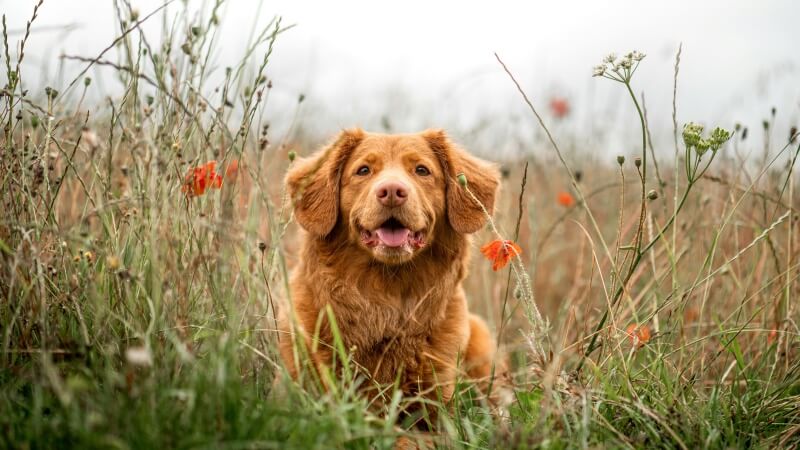
How To Craft A Cozy Cat Vest From Fabric Strips
Have you ever seen your feline friend lounging around and thought, “What could possibly make this picture more adorable?” The answer is simple: a cat

When it comes to outdoor activities or training sessions, a tactical dog vest is an excellent tool for your furry companion. However, ensuring your dog doesn’t overheat while wearing one is crucial for their health and comfort. Here, we explore several effective methods to keep your pet cool and comfortable in their tactical gear, even during the hottest days.
Before we delve into the solutions, it’s vital to understand the risks associated with dogs overheating.
Canines are more susceptible to heatstroke than humans because they have fewer sweat glands and rely mostly on panting to cool down.
A tactical dog vest can trap heat, making it harder for them to regulate their body temperature.
Not all tactical vests are created equal. Select a tactical vest for dogs designed with breathable materials, like lightweight nylon or mesh, which allow for better air circulation.
The vest should be snug but not too tight, as restricting movement can also lead to overheating.
Always provide your dog with easy access to fresh water, especially when they’re wearing a tactical dog vest. Hydration helps regulate body temperature and cools your pet down. Portable dog water bottles or collapsible bowls are convenient for on-the-go hydration during long walks or training sessions.
Plan your outdoor activities during cooler parts of the day, such as early morning or late evening, to avoid the intense midday heat. Even with a breathable tactical vest for dogs, intense physical activity during the hottest hours can be dangerous.
Learn to recognize the signs of heat exhaustion: excessive panting, drooling, increased heart rate, and weakness. If your dog shows any of these symptoms while wearing their tactical dog vest, remove the vest immediately, move them to a cooler area, and consult a veterinarian if symptoms persist.
Consider investing in cooling accessories like a cooling collar or mat. These products can be especially helpful if your dog must wear a tactical dog vest for extended periods in warm climates. They work by absorbing body heat and dissipating it back into the air.
Schedule regular breaks during which you remove the tactical vest for dogs to allow your dog’s skin to breathe. These intervals can prevent heat from building up under the vest and give your pet a chance to cool down.
Proper grooming can also help prevent overheating. A well-groomed coat allows for better air circulation to the skin, making cooling more efficient when wearing a tactical dog vest. However, avoid shaving your dog completely, as their coat also provides protection from the sun.
Even if your dog is wearing a tactical vest for dogs, their paws are exposed to the ground’s heat. Avoid hot surfaces like asphalt, as they can heat your dog’s body and even burn their paws. Opt for grassy or shaded areas instead.
If your dog needs to wear a tactical dog harness regularly due to work or intense training, consulting a professional trainer or veterinarian for personalized advice is wise. They can provide guidelines tailored to your dog’s breed, size, and health status.
Despite all precautions, there might be situations where your dog shows signs of heatstroke while wearing their dog tactical vest. Here’s what you need to do immediately to help stabilize your pet until professional veterinary care is available:
Remember, a tactical service dog vest is designed for function and protection, but it’s your responsibility to monitor your dog’s comfort and health.
Some dog breeds, particularly brachycephalic ones (with short noses) like Bulldogs, Pugs, and Boston Terriers, are more prone to overheating. When these breeds wear a black tactical dog vest, extra precautions are necessary due to their respiratory challenges.
For these breeds, keep sessions with the tactical harness shorter and even more closely monitored. Their inability to pant effectively makes heat accumulation a faster process for them.
Make sure water breaks are more frequent for these breeds. Their unique respiratory structure means they dehydrate faster, especially when exerting themselves.
Apart from the standard tactical dog vest, consider specialized cooling gear like vests or collars that can be filled with cool water or frozen gel packs, providing continuous cooling effects.
Overweight dogs have a higher risk of overheating. For breeds already susceptible to heatstroke, managing their weight is crucial to avoid additional respiratory and cardiovascular stress.
Whenever possible, conduct training sessions indoors in a controlled climate to prevent the onset of heat-related issues.
Regular check-ups are essential for brachycephalic breeds. Discuss with your vet about any special considerations for your dog, especially when they are required to wear a tactical service dog vest for extended periods.
These breeds need a little extra care, but with the right precautions, they can safely wear tactical gear for shorter periods and enjoy the same adventures as other dogs. Always prioritize their comfort and health, and consult with professionals when in doubt.
A tactical dog vest is a fantastic tool for enhancing your dog’s safety and performance during outdoor adventures. However, the risk of overheating is a serious concern.
By choosing the right vest material, ensuring proper hydration, recognizing signs of heat exhaustion, and employing cooling strategies, you can make wearing a tactical vest a comfortable, safe, and enjoyable experience for your loyal companion.
Remember, always prioritize your dog’s comfort and well-being over any training or functional benefits provided by the vest.


Have you ever seen your feline friend lounging around and thought, “What could possibly make this picture more adorable?” The answer is simple: a cat

The moment you consider a dog hunting vest for your adventurous companion, you’re stepping into a world where safety meets functionality. This vest is not

The concept of a dog cooling vest is a game-changer for pet owners looking to enhance their dog’s comfort during those relentless summer days. Imagine

When you first consider crafting a tactical dog vest, it’s not just about embarking on a fun DIY project; it’s about ensuring your furry companion’s

Have you ever seen your feline friend lounging around and thought, “What could possibly make this picture more adorable?” The answer is simple: a cat

The moment you consider a dog hunting vest for your adventurous companion, you’re stepping into a world where safety meets functionality. This vest is not

The concept of a dog cooling vest is a game-changer for pet owners looking to enhance their dog’s comfort during those relentless summer days. Imagine

When you first consider crafting a tactical dog vest, it’s not just about embarking on a fun DIY project; it’s about ensuring your furry companion’s
Secure and Empower, Walk Responsibly
Copyright © 2025pettacticalharness. All Rights Reserved.